How to choose the type of electric motor
Requirements for the electric motor when choosing
The electric motor must most fully meet the technical and economic requirements, that is, it must be distinguished by its simplicity of design, reliability in operation, the lowest cost, small size and weight, provide easy control, satisfy the characteristics of the technological process and have tall energy indicators in different operating modes.
Selection of electric motors for small and medium power fixed drives
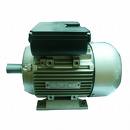 In fixed drives of low and medium power, three-phase squirrel-cage asynchronous motors are used in most cases, the design of which is coordinated with the required starting conditions of the production unit. If these motors cannot provide starting conditions, apply three-phase asynchronous motors with a wound rotor, thanks to which it is possible not only to obtain an increased initial torque, but also to achieve its reduction to a given value.
In fixed drives of low and medium power, three-phase squirrel-cage asynchronous motors are used in most cases, the design of which is coordinated with the required starting conditions of the production unit. If these motors cannot provide starting conditions, apply three-phase asynchronous motors with a wound rotor, thanks to which it is possible not only to obtain an increased initial torque, but also to achieve its reduction to a given value.
Selection of electric motors for high power stationary devices
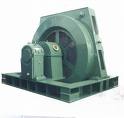 In medium and high power installations in the same single-speed low-speed drives with relatively infrequent starting, it is recommended to use three-phase synchronous motors, which differ from similar three-phase asynchronous machines not only by higher efficiency, but also allow adjustment of the factor of power to compensate for the reactive power of the whole plant.
In medium and high power installations in the same single-speed low-speed drives with relatively infrequent starting, it is recommended to use three-phase synchronous motors, which differ from similar three-phase asynchronous machines not only by higher efficiency, but also allow adjustment of the factor of power to compensate for the reactive power of the whole plant.
Electric motor selection at rated speed
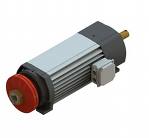 When choosing the nominal speed of the motor, it should be based on the fact that, other things being equal, high-speed motors have smaller dimensions, weight, cost and are distinguished by higher energy indicators than analog low-speed ones. Too high a speed, however, necessitates the introduction of a complex transmission device between the motor shafts and the working machine, as a result of which the advantages of the high-speed motor may be negated.
When choosing the nominal speed of the motor, it should be based on the fact that, other things being equal, high-speed motors have smaller dimensions, weight, cost and are distinguished by higher energy indicators than analog low-speed ones. Too high a speed, however, necessitates the introduction of a complex transmission device between the motor shafts and the working machine, as a result of which the advantages of the high-speed motor may be negated.
The final version of the drive of a working machine with a small size high-speed engine and a rather complex transmission device or with a low-speed engine characterized by increased dimensions connected to the working machine through a clutch is selected as a result of a technical and economic calculation and comparisons of the two options, taking into account the ease of installation, maintenance and operation of the production unit...
Selection of electric motors for installations requiring speed control
If it is necessary to regulate the frequency of rotation of the mechanism over a wide range, DC motors, servo drives and asynchronous electric motors with a squirrel-cage rotor can be used, working in combination with frequency converters.
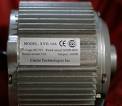 DC motors it is used in those drives where a large range of speed control is required, high accuracy of maintaining the rotational speed of the drive, speed control above nominal.
DC motors it is used in those drives where a large range of speed control is required, high accuracy of maintaining the rotational speed of the drive, speed control above nominal.
Now electric drives with DC motors are gradually being replaced by asynchronous variable frequency drives. Frequency converters allow you to use widely variable asynchronous electric drives where unregulated drives or variable DC drives were previously used.
Variable speed drives with asynchronous motors reduce operating costs, increase overload capacity, increase reliability and reduce environmental requirements.
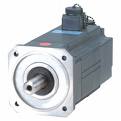 A servo is a drive system that, in a wide range of speed control, provides dynamic, highly precise processes and guarantees their good repeatability. It is a system designed to work with torque, speed and position with a given accuracy and dynamics. A classic servo drive consists of a motor, a position sensor and a control system with three control loops (position, speed and current).
A servo is a drive system that, in a wide range of speed control, provides dynamic, highly precise processes and guarantees their good repeatability. It is a system designed to work with torque, speed and position with a given accuracy and dynamics. A classic servo drive consists of a motor, a position sensor and a control system with three control loops (position, speed and current).
Currently, servos are used when the control accuracy of conventional general industrial frequency converters is insufficient. The use of high-quality servo drives is essential for high-performance equipment where performance is the main criterion.
The choice of the design of the electric motor
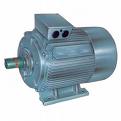 The engine design is selected based on environmental conditions, taking into account the characteristics of the connection between the engine and the working machine.At the same time, the main attention is paid to the protection of the windings and current-carrying parts of the motor from harmful environmental influences due to the presence of dust, moisture, corrosive vapors, high temperatures, as well as explosive mixtures, when it is necessary to provide suitable protection measures of the environment itself from an explosion caused by sparks in the machine. … Manufacturers produce open, shielded and enclosed motors.
The engine design is selected based on environmental conditions, taking into account the characteristics of the connection between the engine and the working machine.At the same time, the main attention is paid to the protection of the windings and current-carrying parts of the motor from harmful environmental influences due to the presence of dust, moisture, corrosive vapors, high temperatures, as well as explosive mixtures, when it is necessary to provide suitable protection measures of the environment itself from an explosion caused by sparks in the machine. … Manufacturers produce open, shielded and enclosed motors.
Selection of the form of execution of the electric motor
The form of execution of the motor is determined by the position of the shaft and the shape of its free end, the number and type of bearings, the method of installation and fastening of the machine, etc., fasteners are used, sometimes flanged motors are used, which have a flange on one of the shields for attachment to the working machine, as well as built-in motors that are directly built into the working machine, forming with it a single production unit.
